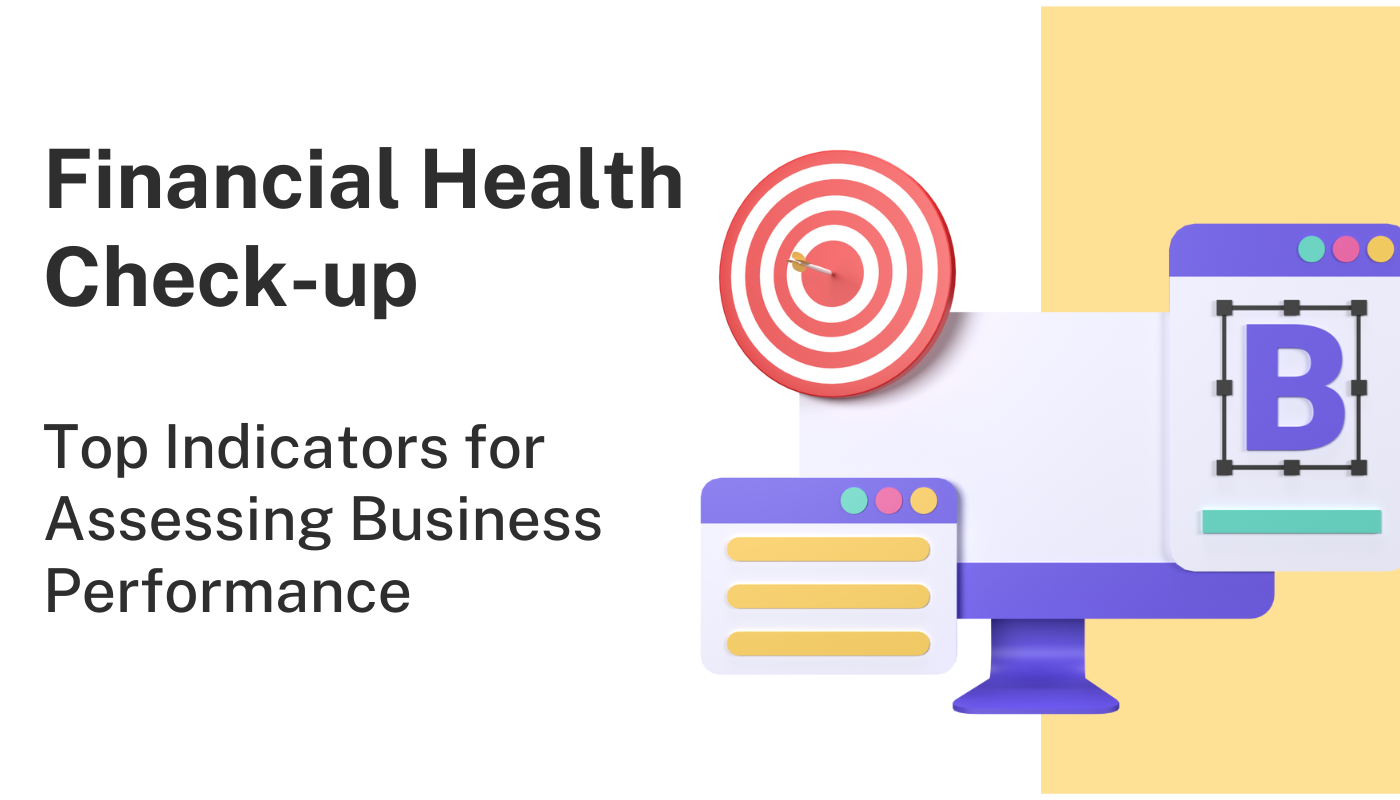Financial Health Check-up : Top Indicators for Assessing Business Performance
As a business owner or manager, it is crucial to regularly assess the financial health of your company. Understanding the key metrics and indicators can provide valuable insights into your business's performance and help you make informed decisions for its long-term success. In this article, we will explore the top indicators that businesses should monitor to gauge their financial health and ensure their sustainability.
The Importance of Financial Health Assessment
Monitoring the financial health of a business is essential for several reasons. Firstly, it allows you to identify areas of strength and vulnerability, enabling you to take proactive measures to address any issues before they become detrimental to your business. Secondly, assessing financial health helps you make informed short- and long-term decisions that can drive your business forward. Lastly, understanding your business inside and out positions you for success and ensures compliance with the set laws in your industry.
Key Areas of Financial Health Assessment
To comprehensively evaluate the financial health of your business, you need to consider several key areas: liquidity, solvency, profitability, and operating efficiency. Each of these areas provides valuable insights into different aspects of your business's financial performance and should be analyzed in combination.
Liquidity : Ensuring Short-Term Stability
Liquidity refers to a company's ability to manage its short-term debt obligations using its cash and easily convertible assets. Before a business can thrive in the long run, it must first be able to survive in the short term. To assess liquidity, two common metrics are used: the current ratio and the quick ratio.
The current ratio compares a company's current assets to its current liabilities. It provides an indication of whether a business has sufficient assets to cover its short-term obligations. A current ratio higher than 1.0 is generally considered favorable, as it suggests that a company can meet its short-term debts.
The quick ratio, also known as the acid test, is a more conservative measure of liquidity. It excludes inventory from assets and the current portion of long-term debt from liabilities, providing a more realistic indication of a company's ability to manage short-term obligations with available cash and assets. A quick ratio lower than 1.0 may signal that a company's current liabilities exceed its current assets, which can be a warning sign.
Solvency : Long-Term Debt Management
Solvency measures a company's ability to meet its long-term debt obligations and signifies its financial sustainability beyond the short term. Solvency ratios calculate a company's long-term debt relative to its assets or equity.
The debt-to-equity (D/E) ratio is a widely used solvency indicator. It compares a company's total debt to its stockholders' equity, reflecting the proportion of a company's financing that comes from creditors versus shareholders. A lower D/E ratio indicates that a larger portion of a company's operations is being financed by shareholders, which can be advantageous since shareholders do not charge interest on the financing they provide. A downward trend in the D/E ratio over time suggests a company is on increasingly solid financial ground.
It's important to note that D/E ratios can vary widely between industries, so it's crucial to compare a company's ratio to industry peers. Additionally, a lower D/E ratio does not necessarily guarantee financial health, as it must be considered in conjunction with other financial indicators.
Profitability : The Bottom Line
Profitability is a crucial aspect of financial health, as it indicates a company's ability to generate profits and sustain its operations. While businesses can survive without being profitable in the short term, long-term profitability is essential for sustainability and growth.
Net margin is a key metric for evaluating profitability. It measures a company's net profits as a percentage of its total revenues and provides a more comprehensive understanding of a company's financial health than a simple dollar figure of profit. A higher net margin, especially when compared to industry peers, indicates greater financial safety and a company's ability to commit capital to growth and expansion.
While profitability is important, it should be viewed in conjunction with other financial indicators to gain a holistic understanding of a company's financial health.
Operating Efficiency : Managing Costs and Resources
Operating efficiency reflects a company's ability to control costs and manage its resources effectively. It is a crucial factor in a company's financial success and long-term sustainability.
Operating margin is one of the best indicators of operating efficiency. It measures a company's operational profit margin after deducting variable costs associated with producing and marketing its products or services. Operating margin reveals how well a company's management is controlling costs and optimizing resource utilization.
Good management plays a significant role in a company's long-term sustainability. Effective cost control and resource management can help overcome temporary challenges, while poor management can lead to the collapse of even the most promising businesses.
Key Takeaways and Conclusion
Assessing the financial health of your business is a continuous process that involves monitoring various indicators and metrics. Liquidity, solvency, profitability, and operating efficiency are all vital areas to consider when evaluating your business's financial performance.
By regularly tracking and analyzing these key indicators, you can gain valuable insights into your business's financial health and make informed decisions to drive its long-term success. Remember that no single metric can provide a complete picture of a company's financial health, so it's essential to consider multiple indicators in combination.
In conclusion, conducting a comprehensive financial health check-up ensures that your business is on the right track and well-positioned for future growth and sustainability. By proactively addressing any areas of weakness and capitalizing on strengths, you can navigate the ever-changing business landscape with confidence and achieve long term success.
Remember, monitoring your business's financial health is not a one-time task but an ongoing process that requires commitment and diligence. Stay informed, adapt to market conditions, and leverage financial insights to make strategic decisions that will propel your business forward.


